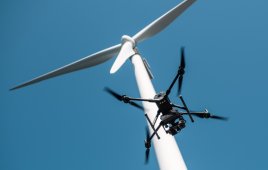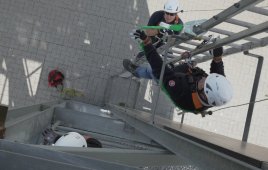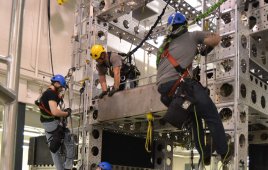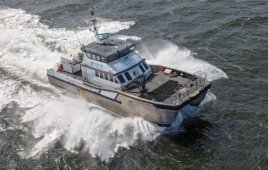 Oliver Hirschfelder
Oliver Hirschfelder
Global Wind Energy Director
Capital Safety
Red Wind. Minn.
www.capitalsafety.us
The World Wind Energy Association forecasts that the wind energy industry will employ one million people by 2012. This means wind power is becoming one of the largest sources of new electricity generation. As the market grows with more turbines on towers, so does the need for thorough fall-protection training programs and planning.
A thumbnail sketch for a safety program at any wind company should include a detailed rescue plan, especially in the event of a fire or a total mechanical failure. As obvious as this sounds, it must be said: The rescue plan must be developed before working up any tower. The plan should outline all possible scenarios and hazards that could occur during turbine installation and maintenance. Most importantly, all rescue and evacuation equipment should be easy to use and quick to deploy.

Technicians in a tower prepare to decend using a rescue device. Manufacturers of safety equipment often update their designs to meet changing work conditions.
In addition to solid planning, workers must be thoroughly familiar with rescue tactics and trained to execute details of the plan. The ideal training program consists of classroom time and hands-on participation. Any training must include identifying hazards, detailing fall protection programs, and choosing the proper equipment to handle a rescue situation.
Major topics to cover in training include:
• Fall protection and rescue system assessments
• Applicable industry standards related to fall protection and rescue
• Fall-hazard elimination and control methods
• Fall-hazard surveys and procedures
• Development and implementation of fall protection and rescue plans and programs
• Proper selection, inspection, use, and maintenance of fall protection and rescue equipment
• Rescue procedures, and more
Equally important is an annual program re-evaluation. Keep in mind, even the most comprehensive plan is useless if workers aren’t trained to execute it properly and quickly. So although there is no wind industry training standard, ideally, wind turbine workers should be certified as competent persons, or competent rescuers, or both.

The technician secures a safety latch to an anchor point on top of a hub. One wind organization predicts the wind industry will employ one million people by next year. Hence, safety and training programs must be active, ongoing, and frequently modified to accommodate changes.
In a rapidly growing and changing industry, ensuring a rescue plan is in place and workers receive proper training is a paramount concern for wind companies. With the sector showing enormous growth and potential, more workers will soon be scaling towers, making the need for fall protection planning and training more important than ever. Every wind company should “get with the program” and periodically re-evaluate its safety program.
WPE
Filed Under: Safety




